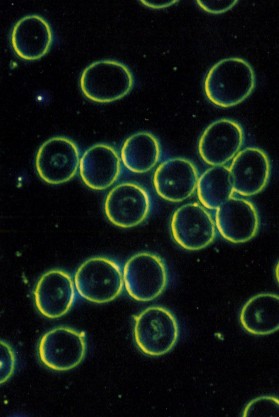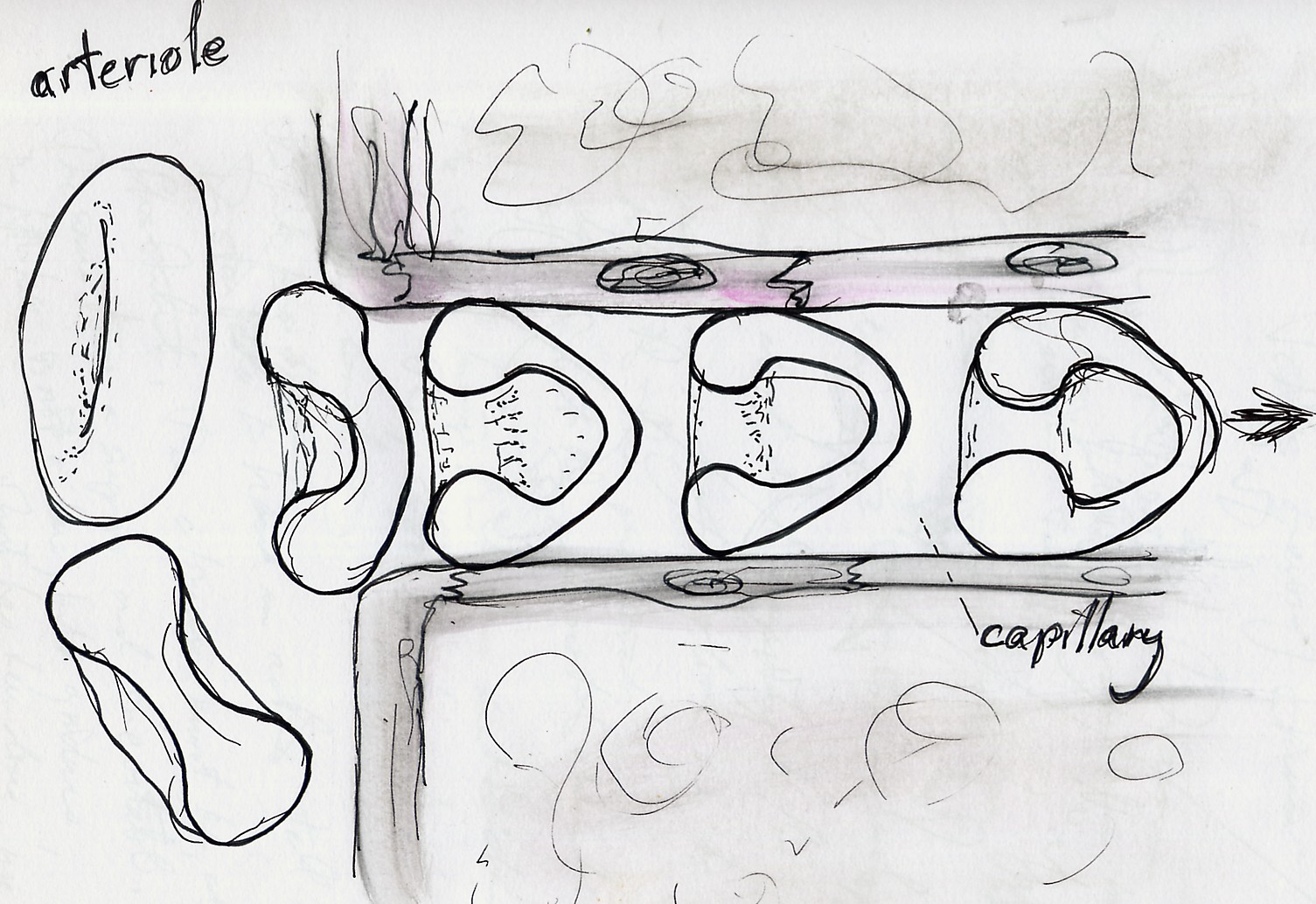alternative
medicine
medicine
Norman
Allan
www.normanallan.com
www.normanallan.com
consultations
416 928 9272
416 928 9272
alternative medicine | Norman
Allan www.normanallan.com | consultations 416 928 9272 | ||
|
| |
| Red Blood Cells (RBCs) clump together in coin-like stacks (or rouleaux formation) wherever space allows them to. They do this, actually, to reduce the viscosity of the blood and for the protection that the red cells receive by traveling in these train-like processions. So RBCs in the main arteries and veins travel, naturally, in these "rouleaux" stacks. |
|
In smaller vessels the stacks break up and the RBCs flow single. This would be the case in arterioles and venules. Oh |
 |
| The RBCs are 7.2 microns in diameter. Capillaries are 6 or 7 microns in diameter. A squeeze! In fact, the RBCs are sucked into the capillaries aligned perdendicular, like a plug, like a coin face-on, filling the whole tube, lieing across the tube, with their this middles sucked down the capillary like a little parachute. (I've lost my source for this, and could not find it in the University library or my files, so I'm just going to have to draw it as best I can from memory) |
 |
| see
also: 714-X pleomorphism ultramicroscopes | |
consultations 416 928 9272 |